Tag: Cemeteries
-
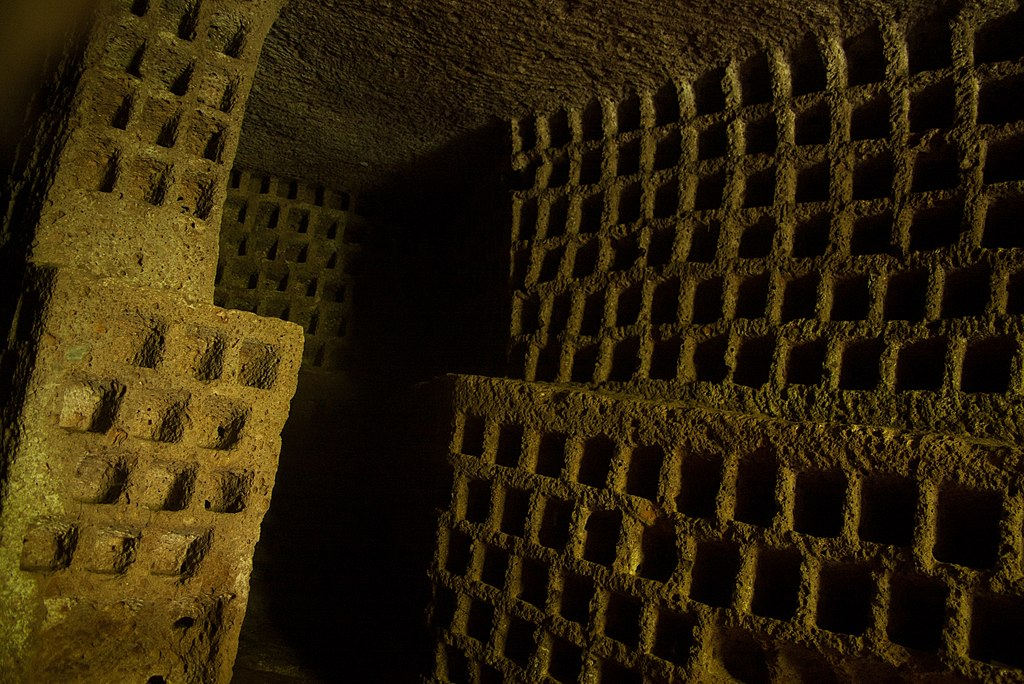
A columbarium is a structure for the reverential and usually public storage of funerary urns holding cremains of the dead
A columbarium (pl. columbaria) is a structure for the reverential and usually public storage of funerary urns holding cremains of the dead. The term comes from the Latin columba (dove) and originally solely referred to compartmentalized housing for doves and pigeons, also called dovecotes. Background Roman columbaria were often built partly or completely underground. The Columbarium of Pomponius Hylas is an ancient Roman example, rich in frescoes, decorations, and…
-
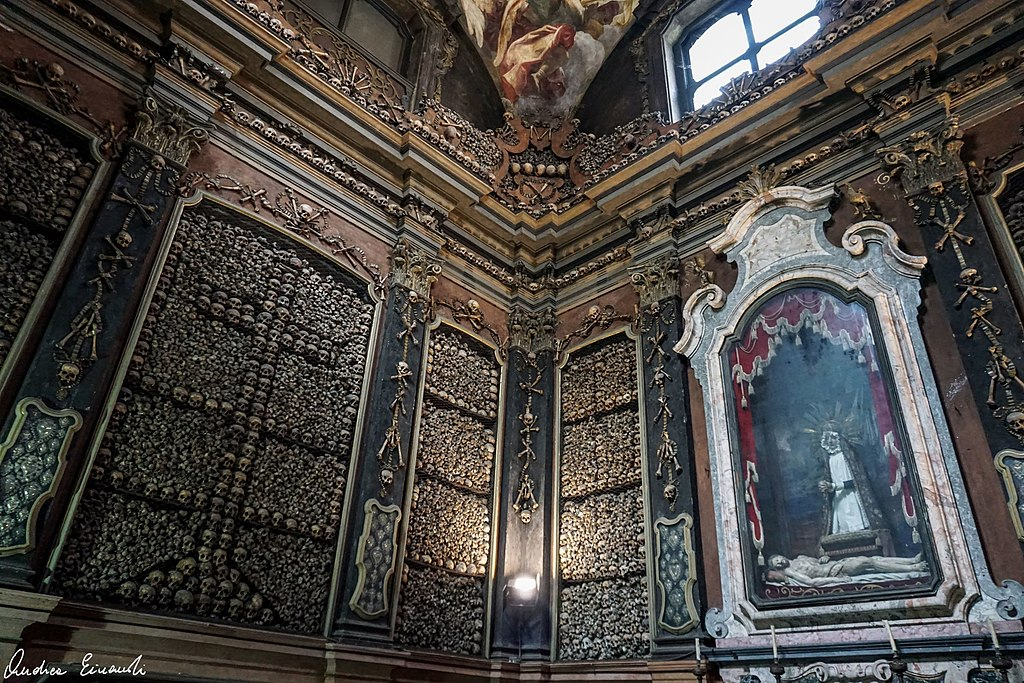
San Bernardino alle Ossa, Milan
San Bernardino alle Ossa is a church in Milan, northern Italy, best known for its ossuary, a small side chapel decorated with numerous human skulls and bones. In 1210, when an adjacent cemetery ran out of space, a room was built to hold bones. A church was attached in 1269. Renovated in 1679, it was destroyed by a…
-
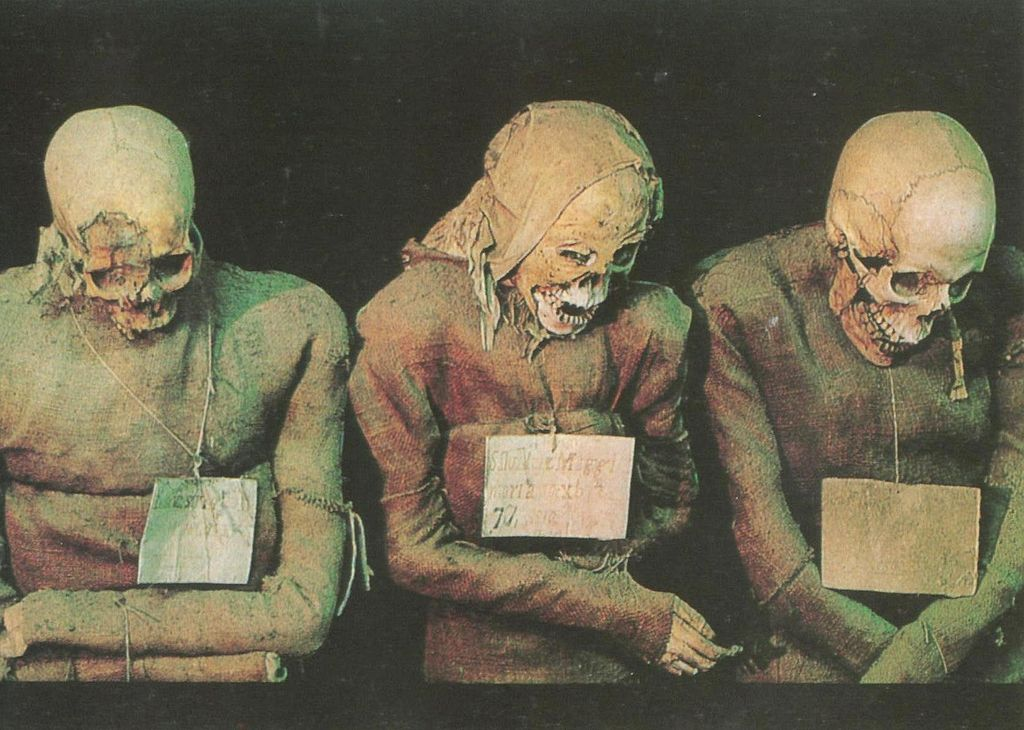
The Capuchin Catacombs of Palermo
The Capuchin Catacombs of Palermo (also Catacombe dei Cappuccini or Catacombs of the Capuchins) are burial catacombs in Palermo, Sicily, southern Italy. Today they provide a somewhat macabre tourist attraction as well as an extraordinary historical record. Historical background Palermo’s Capuchin monastery outgrew its original cemetery in the 16th century and monks began to excavate crypts below it. In 1599 they mummified one of their number, the recently-deceased brother Silvestro of Gubbio, and placed him…
-
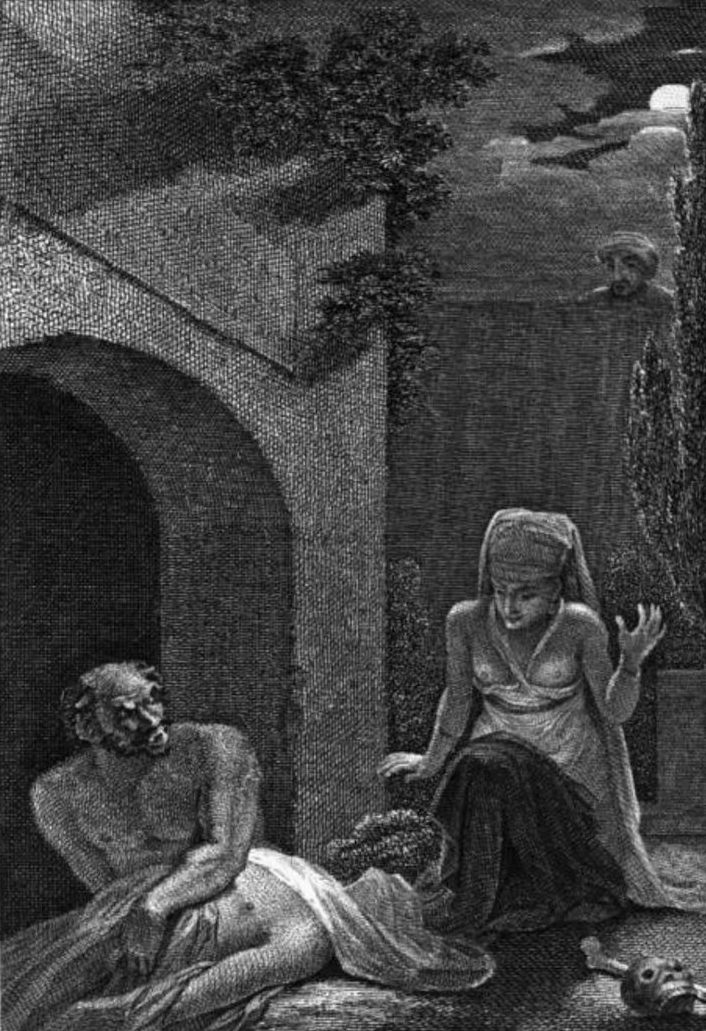
Ghouls (and a few other things)
The Ghoul A Monstrous Mashup of Myth and Macabre Meet the ghoul, a creature so delightfully demonic it’ll make you shiver with excitement. Born from the mystical realms of pre-Islamic Arabian folklore, this monstrous humanoid has evolved into the ultimate symbol of undead terror in modern fiction. Think of it as the goth cousin of…
-

Ghoul Busters: Indianapolis guards its dead (or does it?) by Stephen J. Taylor
JANUARY 24, 2015 STEPHEN J. TAYLOR Hoosier State Chronicles: Indiana’s Digital Newspaper Program From the late 1800’s into the early years of the 20th century, Indiana’s capital city had a body problem. How to protect people who were already dead? Around 1900, even supernatural visitors to the city’s cemeteries would not have been surprised to find “the quick” prowling among the…
-
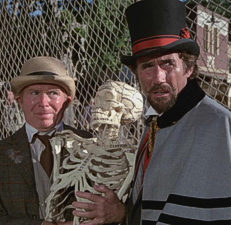
The Graves Violated – Not Very Many Bodies Are Left In Greenlawn Cemetery (Indianapolis Journal, 1899)
GRAVES VIOLATED. The city owns a strip of ground, acquired from the squatters along the river front, immediately adjoining the cemetery and extending to the river, and if successful it is contemplated merging the two tracts into one new park. This policy being understood by a number of families, former members of which were buried…
-

A coffin, a corpse and a baseball field: The strange history of Indianapolis’ Greenlawn Cemetery (by Dawn Mitchell, IndyStar)
by Dawn Mitchell, IndyStar, April 17, 2019 It’s not uncommon during excavation for new construction in Indianapolis that one might unearth artifacts, such as bottles, blackboards, even safes. The discovery of a coffin in 1986 might have been a shock to some, but for those who were acquainted with the history of the area, it was to be…
-
Andreas Vesalius (1514 – 1564) was a 16th-century anatomist, physician, and author who is often referred to as the founder of modern human anatomy
Andreas Vesalius (Latinized from Andries van Wezel) (31 December 1514 – 15 October 1564) was a 16th-century anatomist, physician, and author of one of the most influential books on human anatomy, De Humani Corporis Fabrica Libri Septem (On the fabric of the human body in seven books). Vesalius is often referred to as the founder of modern human anatomy. He was born in Brussels,…
-
The Holy Innocents’ Cemetery is a defunct cemetery in Paris that was used from the Middle Ages until the late 18th century
In 1780, the former Holy Innocents’ Cemetery in Paris was closed because of overuse. In 1786, the bodies were exhumed and the bones were moved to the Catacombs.[ “Paris’ Les Innocents cemetery”. Retrieved February 6, 2011.] Many bodies had incompletely decomposed and had reduced into deposits of fat. During the exhumation, this fat was collected and subsequently turned into candles and soap.[“You (posthumously) light up…
Recent Posts
- 🧬 Disease Table with Low Sodium Connection
- 🧂 Sodium Reduction and Sodium Replacement: A History of Reformulation and Exploding Diseases, Including Many Diseases Unheard of Before Deadly Sodium Policies
- 🧂 The DEADLY 1500 mg Sodium Recommendation predates the WHO’s formal global sodium reduction push by nearly a decade (and it’s even worse than that)
- 🧬 What Is Beta-Glucuronidase?
- When Sugar Was Salt: Crystalline Confusion and the Covenant of Sweetness
Tags
ADAM ASPARTAME Birds Blood Bones Brain Bugs Cancer Columba Cows crystallography Death Death cults Eggs Etymology Gastrin Gold Growth hormone History Hormones Insulin Liver Mere Perplexity Metal Monkey Business Mythology Paracetamol Plants Poison Pregnancy Protein Religion Reproduction Rocks Salt Slavery Snakes Sodium the birds and the bees Thiocyanate Tobacco Tylenol Underworld Venom zinc
